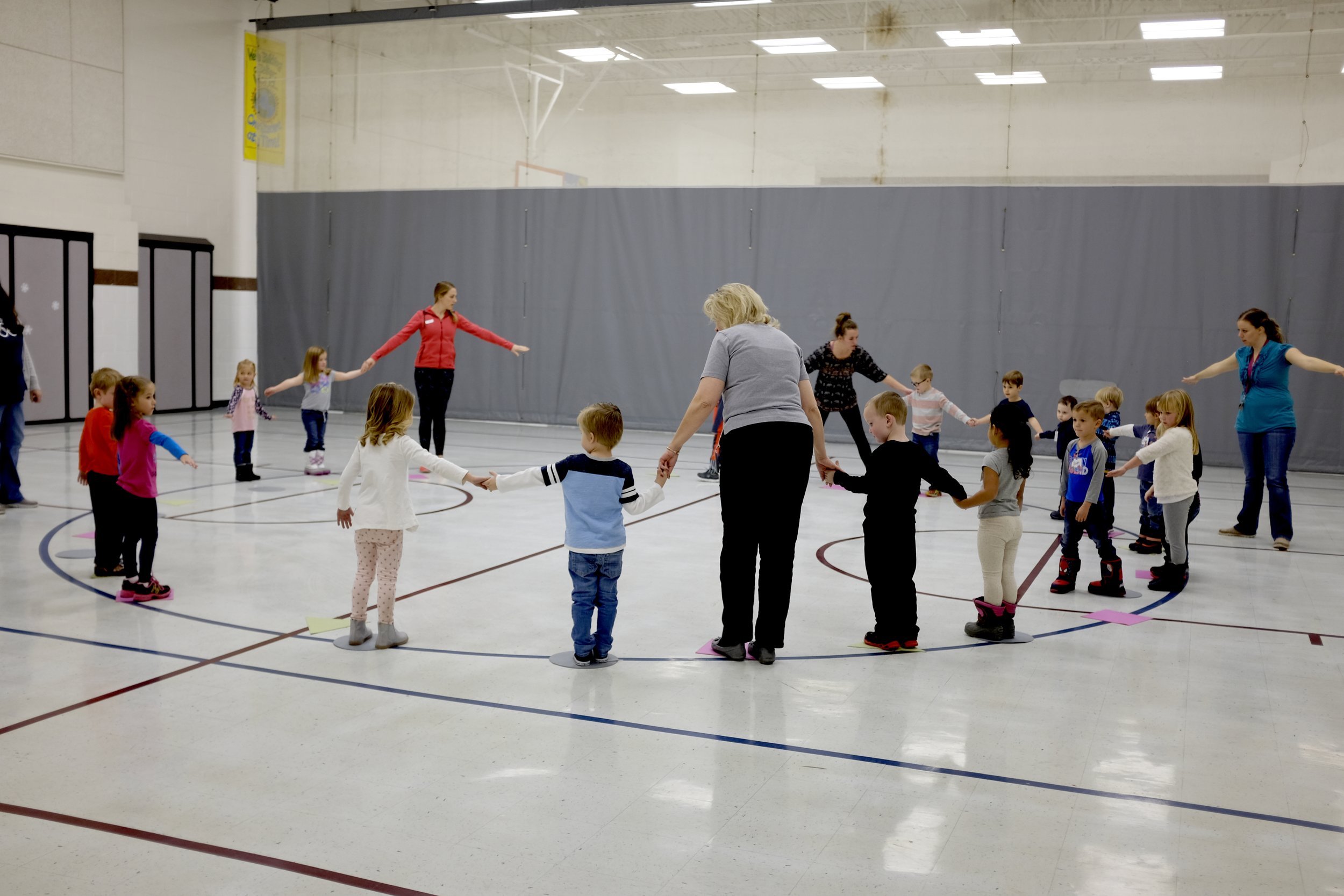
Dance & Special Education
Jump Start
“Students with disabilities have a right and an insight that should allow them to re-map, re-create and re-write the world in which they live”
Jump Start is a creative movement and story-sharing/word-play workshop for individuals with Down Syndrome and their family members, co-taught by Pamela Geber Handman (Associate Professor in the Modern Dance Program) and Melissa Bond (recognized SLC-based writer, journalist, poet). The inaugural, 10-week workshop took place in fall 2013, bringing together families in the community alongside modern dance majors at the University of Utah as teaching assistants. A documentary film was created by Twig Media Lab.
The focus within the classes was to share experiences through dance and story, create dance/text autobiographies, forge bonds among participants and shed new light on family life involving people with Trisomy 21 (Down Syndrome). Participants throughout the community were involved, all ages 8 and up. Modern Dance majors assisted in the teaching process, gaining invaluable experience working closely with diverse families in the community, different abilities and unique gifts.
This project was initially made possible by the generous funding from the Council of Dee Fellows at the University of Utah. The workshop participants’ fees were donated to Tanner Dance and Imagination Place (Music Together), earmarked specifically as scholarships for children with Down syndrome to enroll in future dance or music classes.
Pamela’s Personal Story:
In 2010, I gave birth to a little boy who has Down syndrome. He has changed me in ways I couldn’t have ever expected as a human being, parent, educator and artist. I am incredibly thankful he entered my life. Jump Start is a project I wanted to develop ever since he was born. It has grown out of experiences, new perspectives, friendships and numerous conversations with fellow educators, artists, early intervention specialists, counselors and parents who also have children with Down Syndrome. It has emerged as I’ve observed my son’s cognitive, speech and physical development flourish when connected to dance and music.
“Love recognizes no barriers. It jumps hurdles, leaps fences, penetrates walls to arrive at its destination full of hope”
Jump Start Teachers
Pamela Geber Handman has been teaching since high school, working with preschool age into adulthood and integrating her interests and background in both dance and music. With her home base as a contemporary modern dancer, earning a BFA from New York University’s Tisch School of the Arts, MFA from the University of Washington in Seattle and a Carl Orff certification from Bloomingdale House of Music in NYC, she is now an Associate Professor in the Department of Modern Dance at the University of Utah. Among the array of courses she teaches at UU is Teaching Methods, guiding university students as they teach an integrative approach to creative movement for public school. Pamela is mom to 6-year old Julian who has Down Syndrome.
Melissa Bond is a published author, poet and journalist. She has won several poetry awards, including Best Poet in Motion and Gutsiest Spoken Word performance, and was listed as one of the Catalyst 100 in 2013. She has taught poetry and word play for over a decade and was noted for her contribution to the literary arts by winning the 2002 Mayor's Artist Award. Her book of poetry, HUSH, is published by Elik Press. Melissa is mom to 8-year old Cassius who has Down Syndrome.
Interdisciplinary Teaching Methods Practicum:
Special Education & Dance
This is a University of Utah course co-taught by Pamela Geber Handman, Associate Professor in the Modern Dance Program and Kristen Paul, Clinical Instructor in the Department of Special Education. The class provides a context in which modern dance and special education students collaborate to share knowledge, generate new ideas, and develop effective and individualized arts instruction for students with disabilities in inclusive classrooms. At the beginning of the semester, all students meet together on campus to share backgrounds and prepare for teaching practicums. For the latter part of the semester, students work in collaborative teaching teams, providing creative movement sessions at assigned sites off campus, working with the regular special education classroom teachers in further collaboration. Sites have included: The Utah School for the Deaf and the Blind and special education classes at Hartvigsen, Copper Canyon, Jewish Community Center, Ensign Elementary, Jackson Elementary, Meadowlark Elementary, and others. For many of these schools, the children in special education are gaining exposure to creative movement for the first time.
“An arts practice can remake one’s identity and transform preconceptions by re-envisioning the familiar”
“If we are to achieve a culture rich in contrasting values, we must recognize the whole gamut of human potentialities, and so weave a less arbitrary social fabric, one in which each diverse human gift will find a fitting place”


